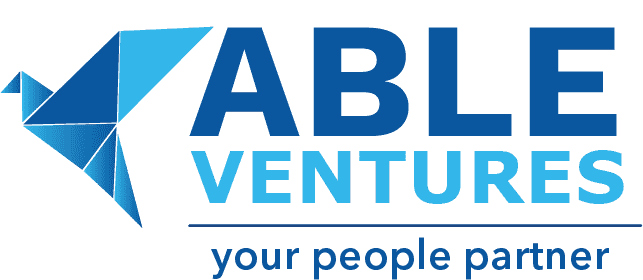Table of Contents
How HR Analytics Is Transforming Workforce Decisions in India
- November 1, 2025
- Able Ventures
- 5:08 am
Let’s be honest — HR used to run on intuition.
Gut feel. Manager instincts. Anecdotal evidence dressed as wisdom.
That world doesn’t work anymore.
In India’s fast-moving business ecosystem, you can’t manage people with guesswork.
You need data — not just to track attendance, but to predict behavior, capability, and performance.
That’s where HR analytics is rewriting the playbook.
Why HR Analytics Matters in India
Across Indian organizations, HR is quietly evolving from a cost function to a capability engine.
The shift is simple but seismic: from managing people reactively to designing workforce strategy proactively.
When used right, HR analytics in India helps you:
- Forecast hiring needs before attrition hits.
- Spot burnout before exit interviews.
- Link learning investments to performance outcomes.
According to Gartner, companies adopting data-driven HR practices see up to 25% better retention and productivity — proof that analytics is now a boardroom priority, not an HR experiment.
Data doesn’t replace empathy. It sharpens it — helping leaders make human decisions with evidence, not emotion.
The Real Benefits of HR Analytics
Forget dashboards for a moment.
The real benefits of HR analytics lie in what leaders do with the insights:
- Smarter hiring: Identify which candidate profiles actually perform, not just interview well.
- Higher retention: Predict turnover before it happens.
- Sharper development: Pinpoint skill gaps and learning needs based on evidence.
- Cost efficiency: Optimize your training and talent spends where ROI is visible.
- Performance clarity: Track impact in real time — not six months later.
Analytics turns HR from a storytelling department into a strategy lab — one that quantifies what used to be intuition.
Tools That Enable Smarter Decisions
The best HR analytics tools don’t just track—they translate.
They make sense of patterns buried deep inside people data.
Examples include:
- People analytics platforms that track engagement and performance.
- Predictive analytics models that forecast attrition or promotion readiness.
- Learning analytics systems that measure if training actually changed outcomes.
- Integrated dashboards combining payroll, attendance, and productivity data for unified insights.
But here’s the nuance most miss:
These tools don’t create intelligence on their own — leaders do.
The value isn’t in the software; it’s in how sharply your HR team interprets what the data is saying.
Making Data-Driven HR Decisions
The strongest organizations aren’t just collecting data — they’re operating through it.
They use analytics to:
- Spot workforce trends by region, department, or generation.
- Identify the real drivers behind engagement, not just satisfaction scores.
- Discover high-potential talent based on behavioral consistency, not visibility bias.
For instance, analytics might reveal that top performers share one hidden habit: they actively participate in peer learning.
That’s not a report. That’s a growth strategy waiting to be scaled.
HR analytics isn’t about measurement; it’s about movement — turning data into better decisions, faster.
The New Role of Digital HR Platforms
Data is useless in silos.
Modern digital HR platforms now integrate recruitment, onboarding, performance, and engagement data into one living system.
They help leaders see patterns in real time, not post-mortem.
As Indian organizations digitize, analytics is shifting from tool to culture.
The companies leading the pack aren’t the ones with the most dashboards —
they’re the ones that make data a daily management habit.
The Challenges and the Way Forward
Even as adoption rises, three roadblocks persist:
- Poor data hygiene: Bad inputs kill good insights.
- Fragmented systems: Old and new platforms rarely talk to each other.
- Analytics skill gaps: Data means nothing if HR can’t interpret it.
Fixing this isn’t about buying another tool.
It’s about leadership — upgrading your people’s data literacy and integrating analytics with business rhythm.
When analytics sits next to strategy, HR stops reacting to change and starts predicting it.
Our Perspective
Here’s the uncomfortable truth:
Most companies don’t have an HR analytics problem.
They have a decision-making problem.
They treat analytics as reporting, not revelation.
The real advantage lies in using data to explain behavior, not just record it.
At Able Ventures, we see analytics as the foundation for capability intelligence — the bridge between talent data and leadership decisions.
Because when you measure what matters, performance stops being a mystery.
Frequently Asked Questions
HR analytics is the practice of using data and statistical methods to analyze employee behavior, performance, and trends. It helps HR teams make informed, evidence-based decisions instead of relying on intuition or guesswork.
In India’s fast-evolving business environment, HR analytics enables companies to forecast hiring needs, reduce attrition, and improve productivity. It transforms HR from an administrative function into a strategic partner for business growth.
The main benefits of HR analytics include:
-
Improved hiring quality
-
Reduced turnover through predictive insights
-
Enhanced learning and development outcomes
-
Better workforce planning and cost optimization
In short, it helps businesses make smarter, faster, and more accurate people decisions.
Leading HR analytics tools include SAP SuccessFactors, Oracle HCM Cloud, Zoho People Analytics, Darwinbox, and Microsoft Power BI. These tools track engagement, performance, attrition, and training effectiveness to provide actionable insights.
HR analytics converts raw employee data into meaningful insights that guide decision-making. It helps HR leaders identify trends, predict workforce needs, and align people strategies with business goals — leading to measurable performance improvements.
The main challenges include poor data quality, disconnected HR systems, and lack of analytics skills among HR teams. Overcoming these requires leadership commitment, system integration, and upskilling in data interpretation.
Recent Blogs

Talent Retention Strategies: What Really Keeps Employees in 2025
A few months ago, I asked a young manager why she left a well-known tech firm after

HR Management Systems in India: What Technology Gets Right (and What It Still Can’t Do)
Technology has done something remarkable for HR — it has made the invisible visible.
Attendance, attrition,

Employee Wellness Programs: The Foundation of Culture Transformation
Walk into a great workplace, and you can feel it — the energy, the calm, the quiet
